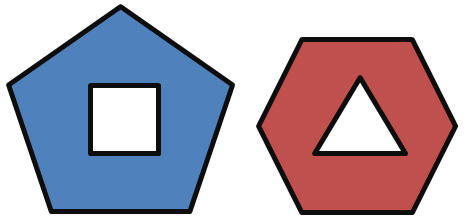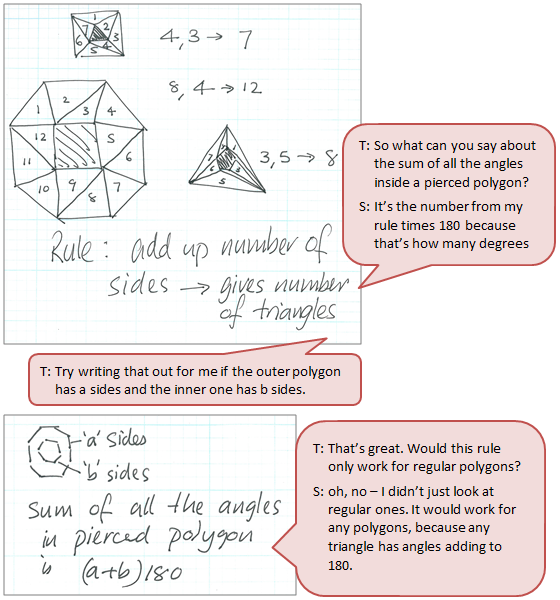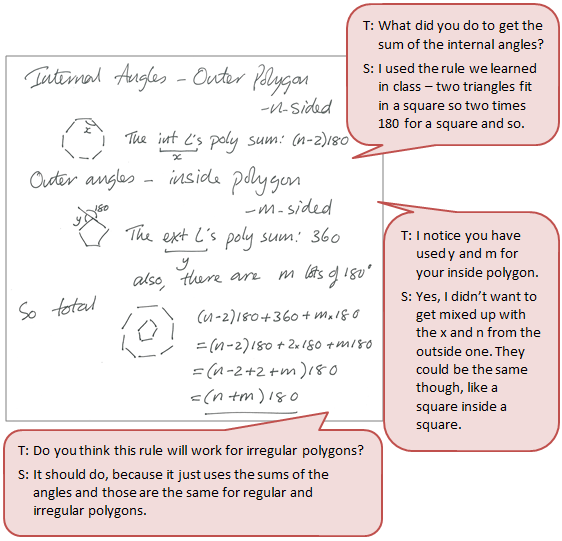The purpose of this activity is to engage students in an investigation applying geometric properties of polygons.
This activity assumes the students have experience in the following areas:
- Using angle properties of triangles and other polygons, particularly sum of interior angles.
- Applying the size of angles that surround a straight line, or a point.
- Finding the next term in a linear sequence.
- Establishing a general rule for a set of ordered pairs.
The problem is sufficiently open ended to allow the students freedom of choice in their approach. It may be scaffolded with guidance that leads to a solution, and/or the students might be given the opportunity to solve the problem independently.
The example responses at the end of the resource give an indication of the kind of response to expect from students who approach the problem in particular ways.
Task: Investigate the sum of the internal angles of a regular polygon that has another regular polygon removed from its centre.
The following prompts illustrate how this activity can be structured around the phases of the Mathematics Investigation Cycle.
Make sense
Introduce the problem. Allow students time to read it and discuss in pairs or small groups.
- What are the important words and symbols? (Do students know what ‘regular’ polygon means? Do they see an angle as a turn? Do they know how angles are measured?)
- Can I imagine (visualise) what the shapes look like?
- Can I draw or sketch the situation? (Using computer drawing tools will be efficient.)
- What angles could I investigate? (Do students understand interior and exterior angles?)
Plan approach
Discuss ideas about how to solve the problem. Emphasise that, in the planning phase, you want students to say how they would solve the problem, not to actually solve it.
- What are the maths skills I need to work this out? (Angle properties of polygons will be needed.)
- How could I model this problem using pictures, equations, tables or measurement tools?
- What tools (digital or physical) could help my investigation?
Take action
Allow students time to work through their strategy and find a solution to the problem.
- Have I recorded my ideas in a way that helps me to see patterns?
- Are there any patterns?
- How might I describe the patterns?
- Can I generalise the pattern into a rule of some kind?
- How might I express my rule?
- Are there other patterns about the angles that I might find?
Convince yourself and others
Allow students time to check their answers and then either have them pair share with other groups or ask for volunteers to share their solution with the class.
- What have I noticed that seems to work all the time?
- Why does it work all the time?
- Have I considered all possible cases?
- Have I expressed the generalisation is a way that is clear to others?
- Which ideas would convince others that my generalisations hold?
Examples of work
Work sample 1
The student applies geometric properties of polygons to investigate the angles in specific examples.
Click on the image to enlarge it. Click again to close.
Work sample 2
The student applies geometric properties of polygons to find a pattern that can be used to solve the problem.
Click on the image to enlarge it. Click again to close.
Work sample 3
The student applies geometric properties of polygons to find a pattern that can be used to solve the problem.



